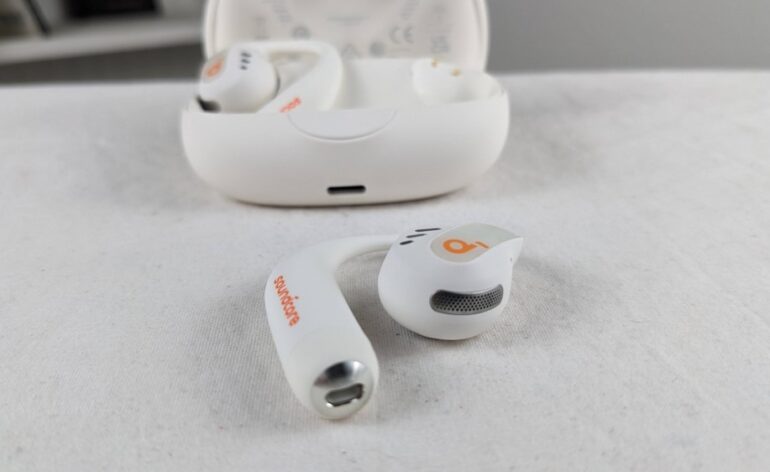Safe Exercise with Great Sound? soundcore AreoFit and AreoFit Pro Open-Ear Headphone Review
Now that people have realized that bone-conduction headphones sound terrible, they are looking for other options. They want something that will allow them to exercise outdoors safely without sacrificing too much sound quality. Open-ear headphones seem to be the perfect compromise. These headphones sit outside your ears allowing you to hear the music while giving you access to outside sounds. The soundcore by Anker $130 AreoFit and $170 AreoFit Pro are two open-ear headphone solutions for two very different people. Which will work for you? Let’s discuss!
soundcore AreoFit and AreoFit Comparison

soundcore designed the AreoFit and Areofit Pro open-ear headphones very differently. That said, headphones in general are very personal. What works for one person very well might not work at all for the next. You can easily find reviews online that say that one of these is the best headphone the person has ever used right next to another review claiming that they are the worst. Open-ear headphones rely very heavily on fit. If one of these fits you well, you’ll love them. If they don’t, you won’t. It’s as simple as that. How will you know? You’ll just have to try them on!
AreoFit and AreoFit Pro Design
The Areofit and AreoFit Pro both have an ear-hook design. This keeps them in place by hooking over your ear. The AreoFit Pro has an optional neck strap that you can add for additional security. I found both of the headphones to stay fairly securely in place during normal use. I tested these headphones by wearing them for a couple of days straight. At work, I’m constantly moving around and looking up and down. Neither headphone ever slid loose or fell off. I even put on hoodies with them in and they stayed in place.
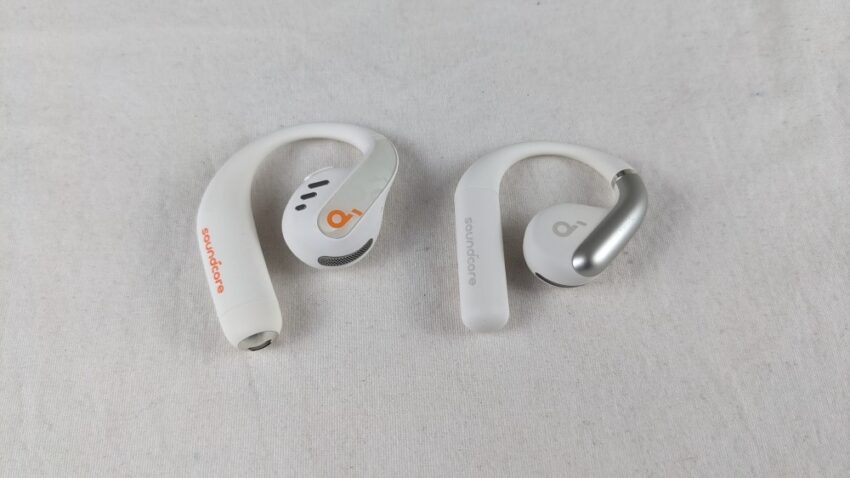
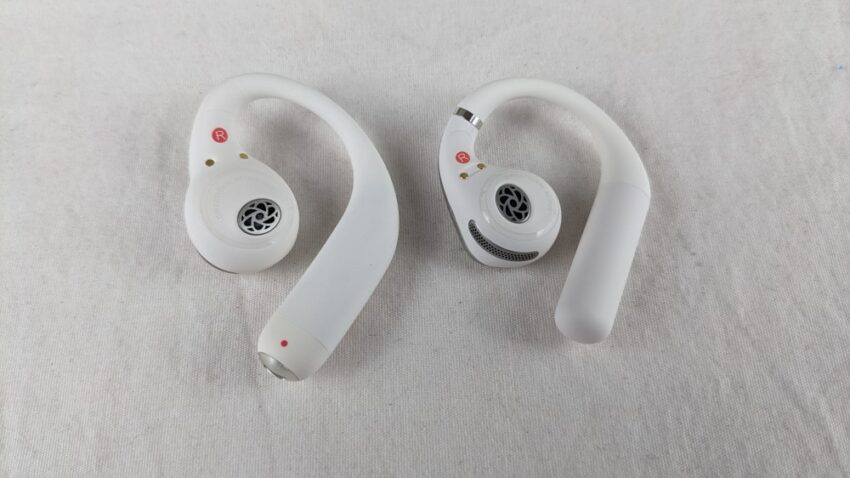
Each headphone comes with its own charging case. The AreoFit and AreoFit Pro open-ear headphones both brag over 10 hours of life on their own with over 30 extra hours via the case. I found this to be accurate. The headphones snap into place inside the case via magnets to ensure that you have them in the proper orientation for charging. The cases have lights that let you know that the case is charging and when it is done. Unlike other earphone offerings I’ve tested, the soundcore Areo headphone cases do not charge inductively. You’ll need to use the included USB-C cable.


The AreoFit are targeted at small ears in their marketing while the AreoFit Pro are for sports. The AreoFit are much smaller than the Pros. In my experience, the AreoFit are a fairly normal size for open-ear headphones while the Pro version is larger than normal. The AreoFit have an IPX7 rating (can be submerged in water briefly) while the Pros have an IPX5 rating (safe from sweat and rain). Either should be fine for vigorous exercise.
AreoFit and AreoFit Pro Control
The biggest difference between the AreoFit and AreoFit Pro open-ear headphones is the control scheme. The AreoFit use capacitance controls. The area on the side that has the soundcore logo is the control area. When you touch this area, you are controlling the headphones. By default, a single tap does nothing, which is good. You WILL hit that capacitance area when putting in the headphones. I did every single time. Luckily, you can configure the controls via the app (more on that later) to your liking.
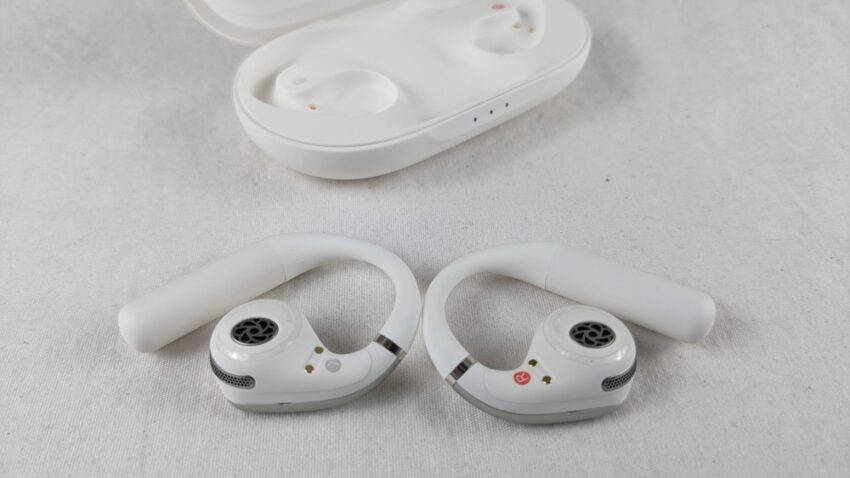
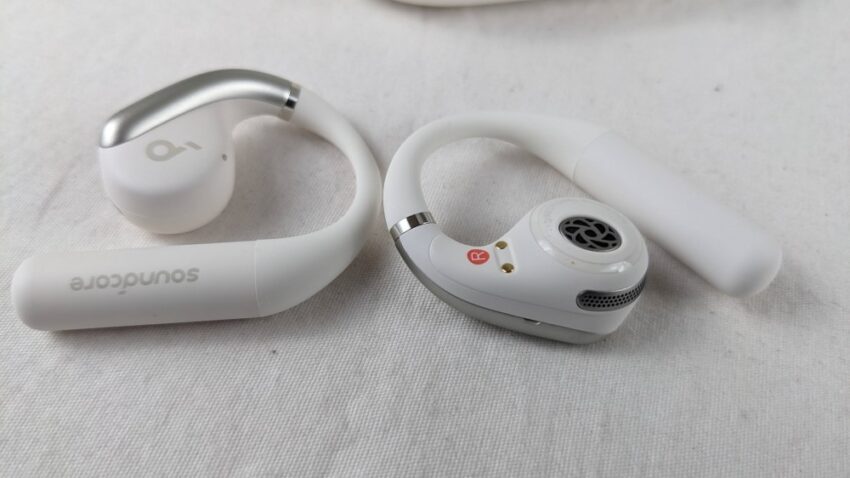
The AreoFit Pro is a large headphone and sports an actual button. This, in my opinion, is much preferable to the capacitance control scheme. The button is easy to locate once you know where it is. You can clearly feel it click. As with the AreoFit, the Pro control scheme can be modified through the app.
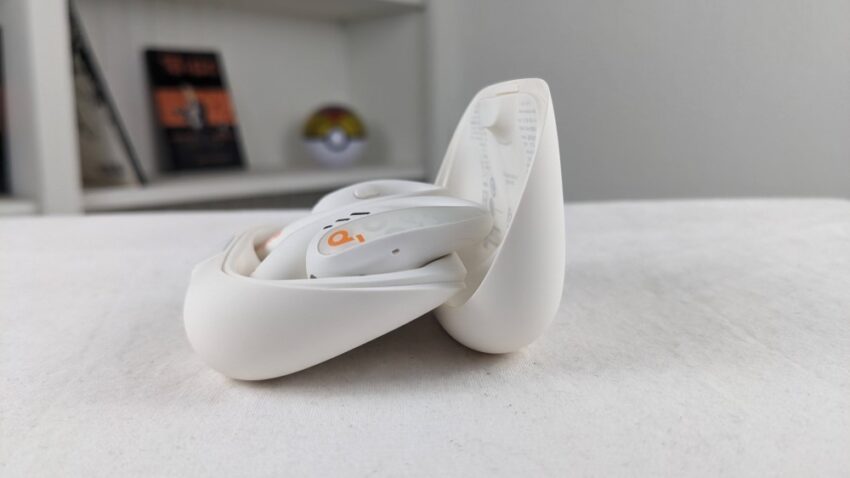
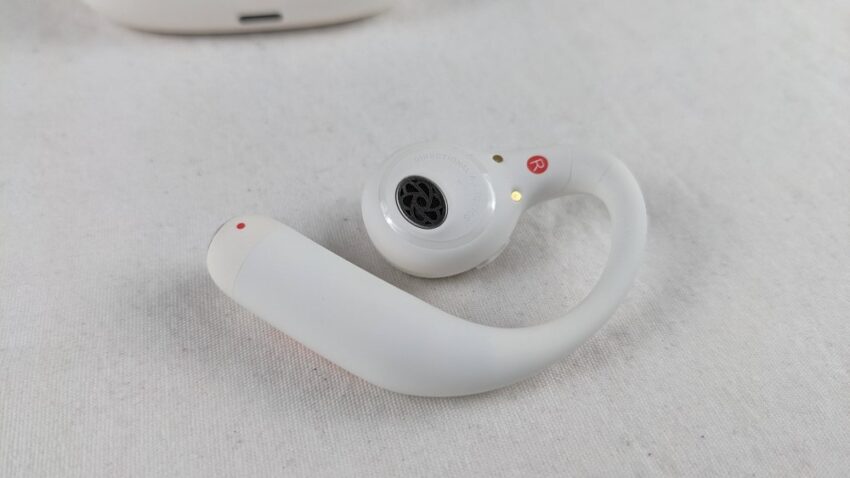
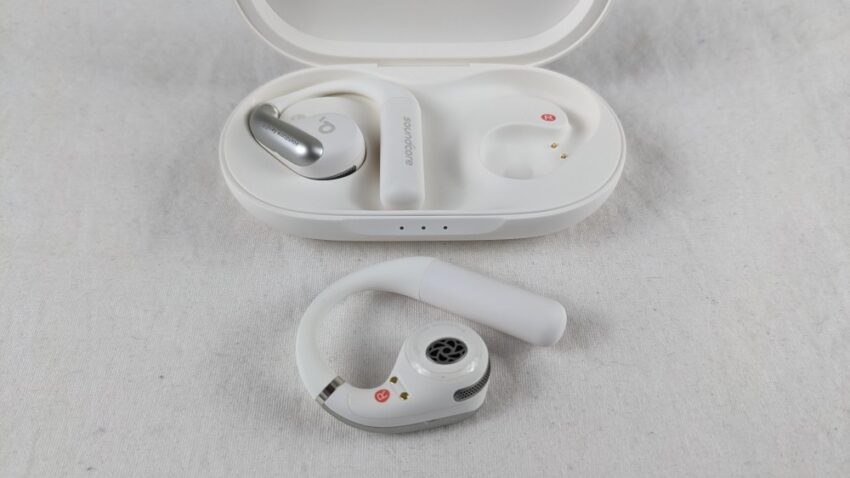
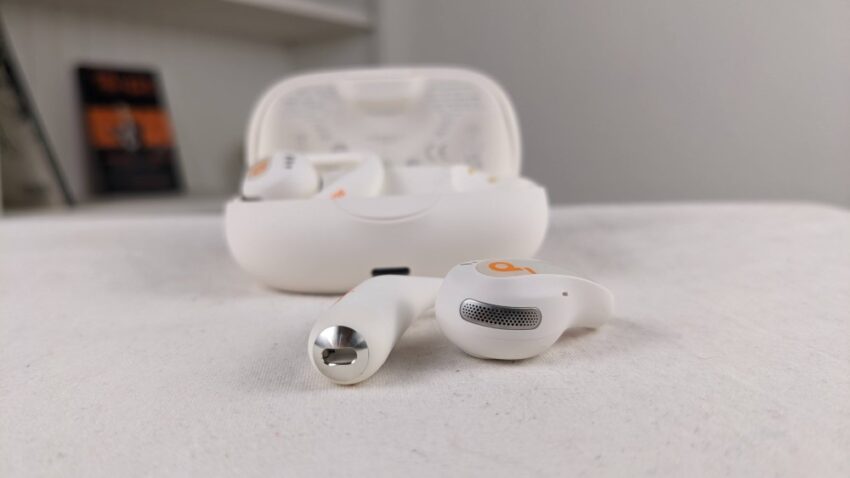
With both headphones, I found the controls responsive and precise. Single, double, and long presses were all accurately detected. With the AreoFit, the capacitance controls were fairly easy to accidentally hit but selecting “none” for the single press to do nothing ensured that you weren’t skipping songs or pausing your content. It did mean that your options for control were a double press and a long hold. This meant you had to be very thoughtful with your control selections. That said, the AreoFit Pro only had options for single and double presses so it wasn’t as if they had any more options.
soundcore App
I’ve been a fan of the soundcore app since I started using it. That hasn’t changed. It has all the controls and information you’ll need. You can see (via a battery indicator) how much charge is left on each earphone as well as the case. There are automatic EQ options as well as a manual EQ. You can modify the balance between the two earphones, use the app to help you find a lost earphone, and enable dual connections. I find the soundcore app to be one of the best in the business.


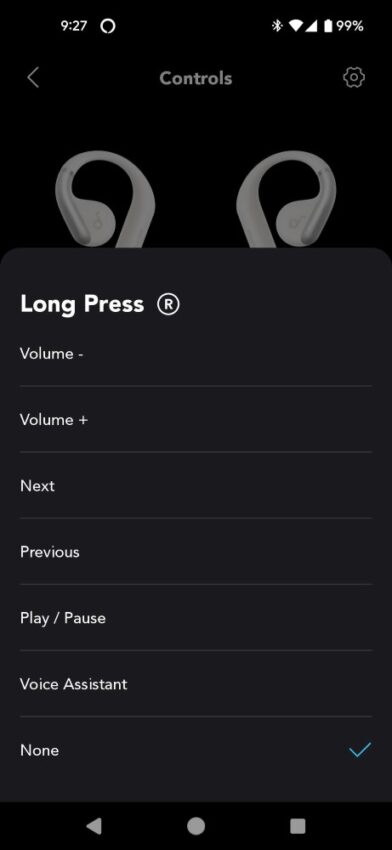
Sound Effects
The AreoFit and AreoFit Pro open-ear headphones each have a unique sound effect mode. The AreoFit headphones have a 3D Surround Sound mode. This mode is “best suited for films and gaming.” Honestly, I felt it made everything sound like I was listening to it while underwater.


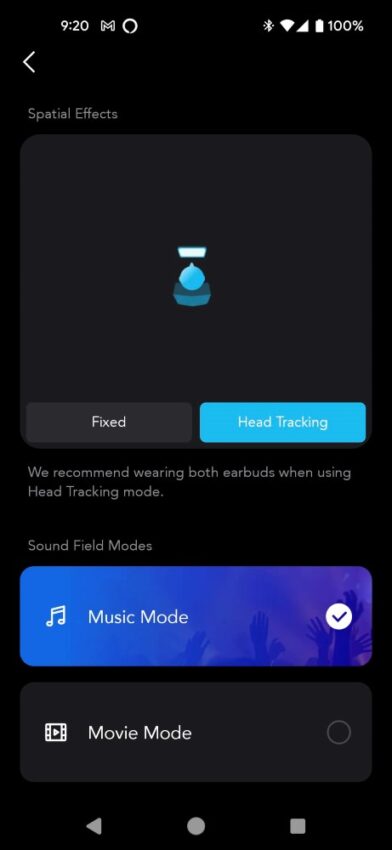
The AreoFit Pro has Spacial Audio. This comes in two flavors, Fixed and Head Tracking. Fixed attempts to give you a surround sound experience. While it wasn’t very convincing, it was a lot better than the 3D mode of the AreoFit. The Head Tracking mode locks the sound in front of you. After you enable it, if you turn your head, the sound will appear to come from the direction you were looking when you enabled the mode. The Spatial Audio modes have either Music or Movie EQs. The Music is much more akin to selecting the manual EQ and leaving the line flat. It does sound like the treble and reverb is boosted slightly. The Movie EQ has more midrange and bass (and reverb).
The Fit of the AreoFit Duo
It’s clear to me that any opinion I could have on the fit of these two headphones is basically useless to you. Read the online reviews and you’ll find people with such varying experiences that you’d think they were wearing completely different headphones. But, since this is a review, I’ll give my experiences.
Both of the soundcore AreoFit and AreoFit Pro open-ear headphones had a similar fit. You slide them over your ear so that the “tail” settles in behind your lobe while the speaker rests just outside your ear canal. If you are the type of person that can’t stand in-ear headphones, this design will highly appeal to you. As mentioned, the AreoFit Pro has the added feature of a neck strap that will appeal to those who want additional security. The neck strap is fairly rigid but fully adjustable.
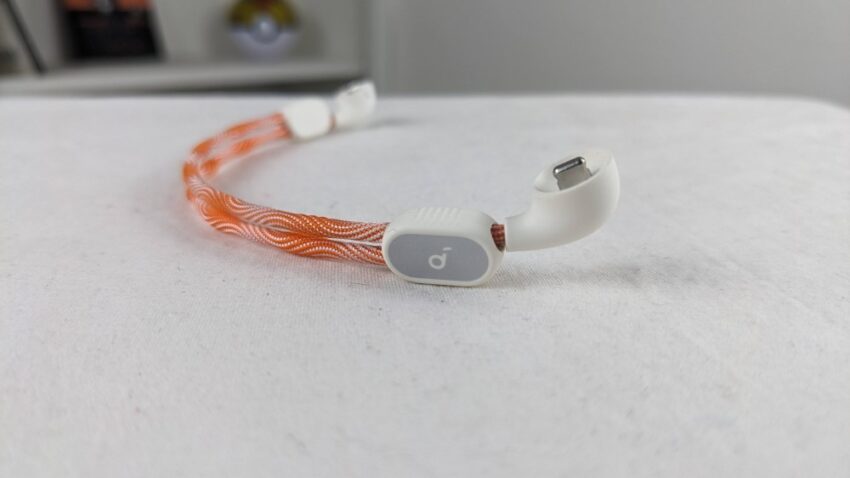

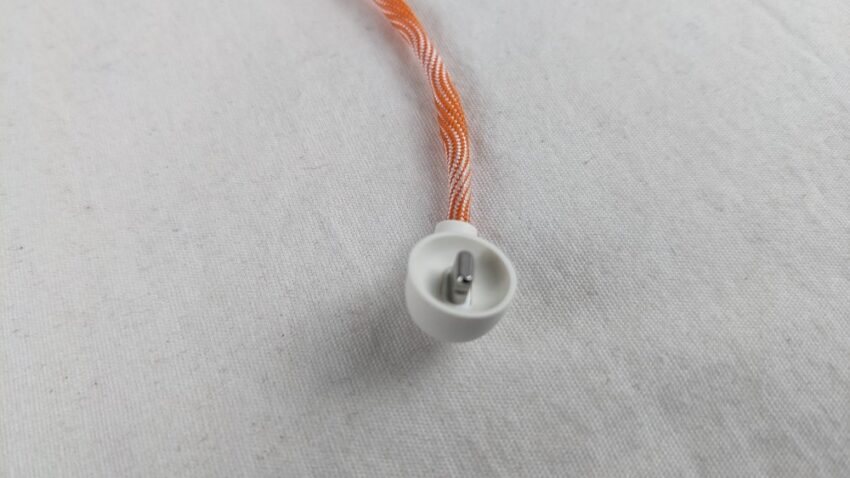
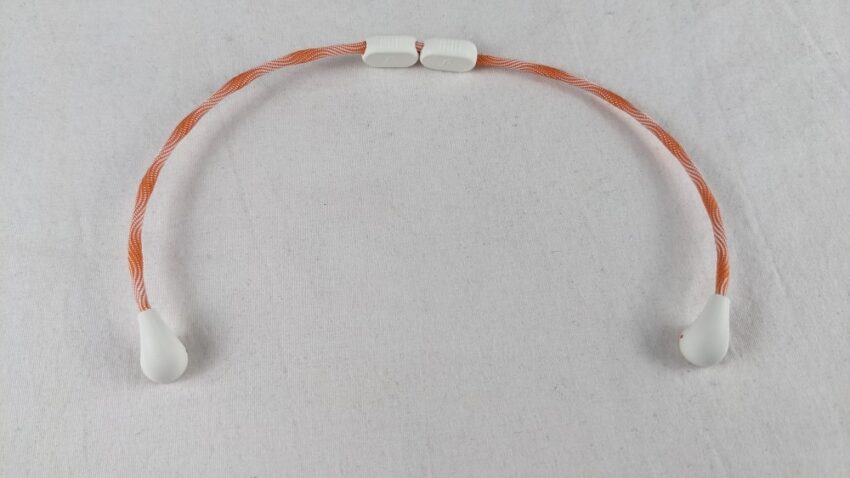
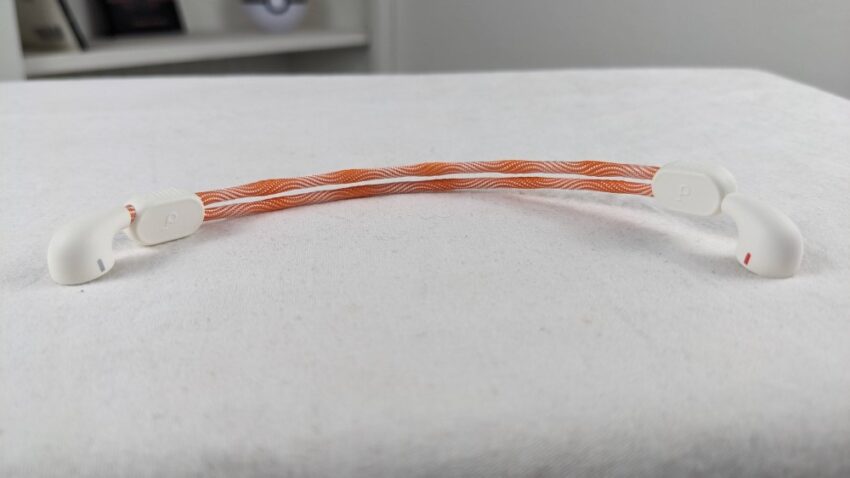

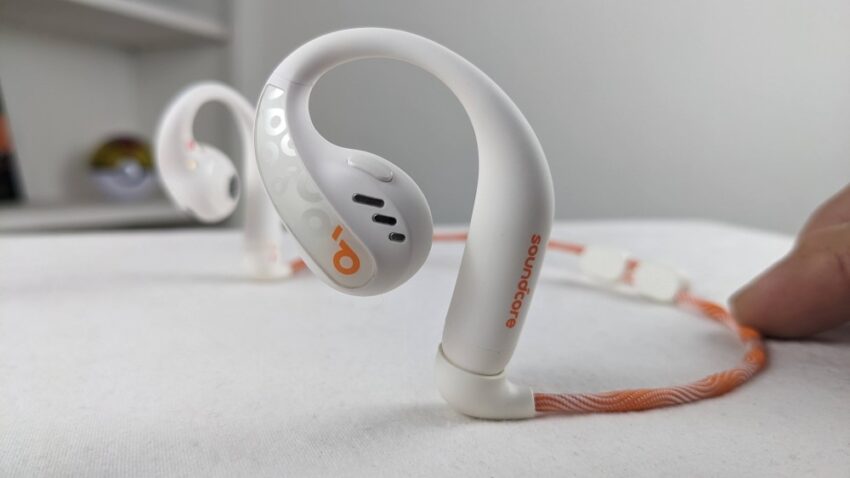
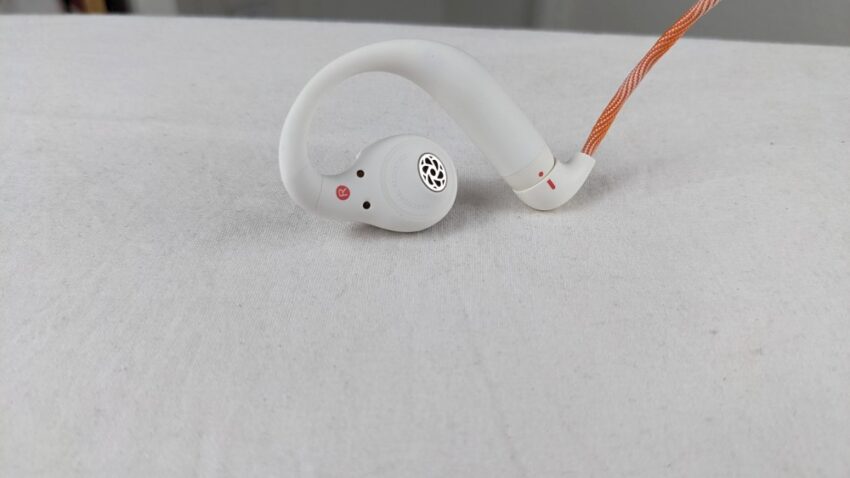

The main pressure point of the headphones is at the top of your earlobe. I wear glasses which adds yet another obstacle and point of contact to the same point on my ears. When I first put on the headphones (either one), I thought that the arm of the glasses would push them too far out and make them unstable. This was not the case. I was able to wear them for many hours doing normal life and work activities. Never once did they so much as move out of place much less dislodge.
My only complaint was that I experienced some rubbing at the top of my earlobe. This, again, is to be expected. That rubbing didn’t come after a couple of hours but after I had worn the headphones (I was switching between the two) all day long. When I first got my glasses I had the same experience. If you are going to wear any headphone all day, you are going to expect that there will be a period of getting used to them.
AreoFit and AreoFit Pro Open-Ear Headphones Sound Quality
Fit of the headphones directly speaks to the sound quality you’ll experience. Since the headphones sit outside your ears, how they fit your particular ear shape will dictate how well-oriented the drivers are to your ear canal. If they fit you well, you’ll find the audio quality much better than someone with poor fit.

In my case, the AreoFit Pro fit me better than the AreoFit. With the better fit came more bass and volume. This meant I preferred the AreoFit Pro. This leads me to the importance of the soundcore App. Usually, I set the EQ to “Manual” and don’t make any adjustments. With these settings, I can hear the headphones with no EQ adjustments. In this configuration, the AreoFit Pro was the clear winner in my case. But, and this is an important “but,” the app made a huge difference. By engaging the soundcore Signature EQ with the AreoFit, the differences were reduced significantly. Suddenly the AreoFit had much more bass and sounded more balanced.
Safety When Exercising
The big draw for the open-ear headphone design is that you can listen to your music or have access to your notifications without losing the ability to hear outside sounds. This is true and the soundcore offerings function well. That said, you need to temper your expectations if you’ve never used this type of headphone before.
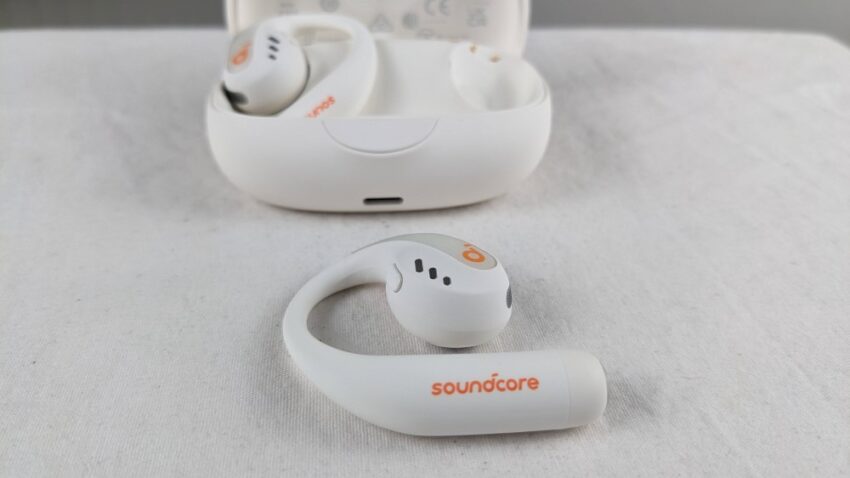
If you want your music to be relatively loud, then it will block out all but the loudest sounds. That’s just how sound works. The more you turn down the volume, the more you’ll be able to hear outside sounds. It feels weird to have to say that but I still have people suggesting that they can get noise-canceling headphones to block out people talking to them.
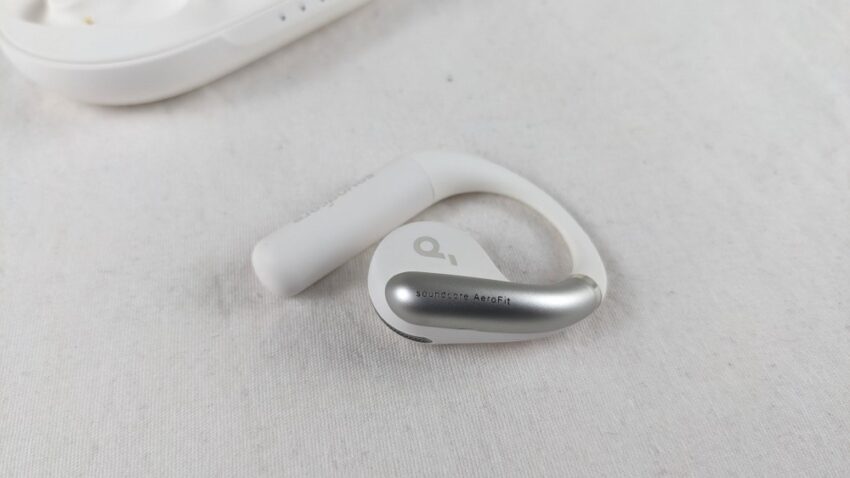
I wore both the soundcore AreoFit and Pro open-ear headphones at work. I was able to interact with my co-workers with few problems as long as I kept the music at a low level. By “interact with” I mean I could have a normal conversation at a normal speaking volume and only miss a word or two. If you are exercising outside, you may only really want to be able to hear sounds that are dangerous to you (cars approaching for instance). In that case, it will be up to you to test how loud you can play your music and still be confident that you’ll hear that EV coming up from behind.
Take Away
The soundcore AreoFit and AreoFit Pro open-ear headphones are very different. They have different control schemes, are different sizes, and will likely fit very different ears. The big question you may have is how secure they fit. In my experience, they are very secure. They are both basically waterproof (let’s call it sweatproof), the soundcore app can make up for many fit deficiencies, and they don’t cost too much. The AreoFit can already be found on sale for much less than their $130 MSRP. Price, however, shouldn’t be as much of a consideration as the fit and control scheme. The Pro versions are significantly larger than the regular AreoFit. One will fit you and the other likely won’t fit as well. Hopefully, the one that fits your ear best will also be the one that fits your budget.

